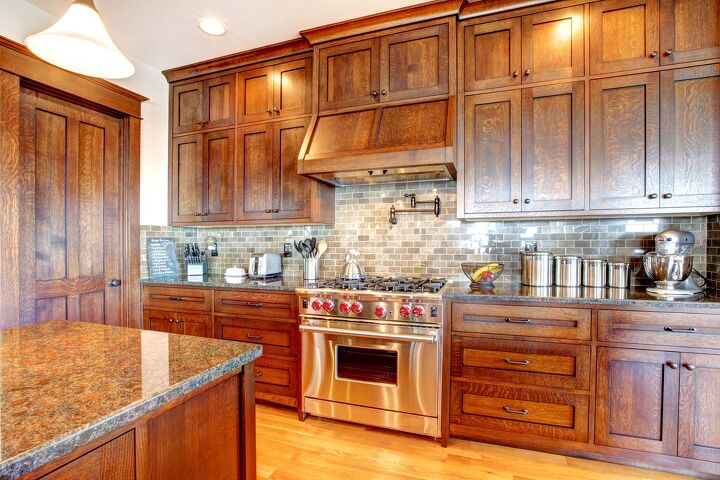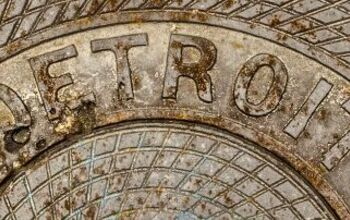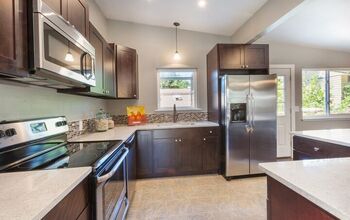What Are The Pros And Cons Of Alder Cabinets?

If you’re in the market for new kitchen cabinets, chances are you’ve thought about alder. A sturdy birch wood, alder was once out of fashion in home design. Now, however, alder is standing strong as a design staple in any modern kitchen. From farmhouse to beachy, this knotty wood is sure to impress.
Pliant and soft, this type of wood has been known to be used for many different types of craftsmanship. Alder isn’t just for kitchen or bathrooms— oh, no. Guitars, dining room tables, and rocking chairs are just a few examples of how universal alder wood can be. A kitchen, though, is where alder wood really shines.
A member of the birch tree family, there are over 35 species of alder around the world. Some have a beautiful reddish undertone and some appear more butter yellow, giving cabinet-makers a plethora of looks to choose from. With its smooth grain, alder is very similar to cherry wood. Many home builders would say that alder is a more sustainable and economical choice in home design and renovation.
When looking to refinish or design your kitchen cabinets, there are a few pros and cons to consider with alder wood.
The pros of alder cabinets include the low cost, wide spectrum of available colors, its versatility, the unique knotty quality of the wood, and its status as a locally grown and sourced wood. A few cons of alder wood cabinets are their uneven staining, moisture retention, and durability concerns.
Read on to find out if alder cabinets are for you and your kitchen!
Do You Need to Hire Cabinet Installers?
Get free, zero-commitment quotes from pro contractors near you.

What Are The Pros of Alder Cabinets?
There are several pros to springing for alder wood cabinets in your home. From its relatively low cost and overall durability to its wide range of colors and stains, you might just find that alder works great for your space.
Low Cost
Compared to other wood materials, alder is relatively affordable. When it comes to the price point, alder is holding fast in the middle of the road. Definitely not as pricey as mahogany or cherry, alder won’t break the bank when it comes to sticking to a budget. It’s come a long way since being deemed as “the poor man’s cherry.” On average, alder runs around $3.95 per board or $2.85 per board for a more knotty finish. Compared to the vastly more expensive mahogany and cherry, alder is a great option.
10% less costly than other woods, alder is a great option if you’re looking to save some money but still want a wood that’s going to look and feel classy. One of the reasons for its lower cost would be that this wood is readily available everywhere. You’re not looking at a months’ long wait for alder cabinets!
Colors and Hues
One of the most winning features of alder wood is its beautiful spectrum of hues. Alder wood can range anywhere between a golden honey color to a young cherry. Unlike cherry, however, alder won’t darken over time.
In fact, if exposed to the sun over a long period of time, alder will actually lighten. If you’re looking for a kitchen that is light and fresh, alder just may be the perfect option for you. With its rustic and knotty look, alder is a great marriage between quality and price.
Because of its porous nature, alder actually responds very well to different stains. If you’re looking for a kitchen that has darker, more earthy tones, alder would be great for a DIY staining project. Plus, you won’t have to use as much stain or work as long to get the desired color you’re looking for! Alder absorbs stain beautifully, making your DIY afternoon a lot easier. No matter your aesthetic, there’s a stain to match!
Alder’s Versatility
When compared with other North American hardwoods, alder is one of the more versatile on the market. Furniture makers and home builders are big proponents of alder. Alder’s overall flexibility makes it ideal for craftsmen who work with their hands. Alder wood isn’t at risk for splitting or cracking when the pressure of a nail gun or a drill is applied. It’s sandable and bends well under the hands, making it ideal for cabinets, furniture, doors, and even molding.
Knotts
One of the more unique aspects of alder wood is its knotty quality. Circular imperfections within the wood grain itself, knots show up in plenty of different wood types. In alder wood, knotts can be either prevalent or almost nonexistent, depending on the specific species. The knotty quality of alder cabinets was popularized in the 1950s, when lighter colored woods and more rustic stylings were quite prevalent.
Knotts can add natural character to your cabinets. If you’re someone who isn’t interested in the rustic, earthy quality of a knotty wood, never fear! Alder can come in a variety of veneers. Solid alder is available!
Locally Grown And Sourced
Because it is a wood native to North America, alder is easy to get ahold of and extremely affordable. More than that, though, it reduces the eco-footprint in your own home. Importing exotic woods from all over the world requires a lot of time, energy, and money. Opting for alder wood cabinets will greatly reduce the carbon footprint of your home design.
There are over eight species of alder native to the United States. With that many options, you can easily find an alder that is suitable and adaptable to climates all over the states. Using an ethically sourced wood in your home will set your home apart. By participating in the responsible sourcing of raw materials for your remodel or new build, you will go a long way in making sure your forever home is a sustainable one. Fast-growing, local, and versatile, alder is a quality material for any set of kitchen cabinets.
What Are The Cons Of Alder Cabinets?
Even though there are a plethora of pros to alder cabinets, there are a few things to look out for when looking at potential wood types.
Uneven Stain
Unfortunately because of its knottiness, a lot of alder wood will stain unevenly. While great for holding the color of a stain, it will probably show areas of light and dark, which can enhance the rustic quality of the wood. If you’re going for a more rustic, farmhouse theme, then the knottiness of an alder cabinet would undoubtedly mesh well with your aesthetic.
If you’re looking for a more even-toned, dark wood and you’re using alder as your base, you’re going to want to be careful of uneven staining. A more modern, sleek kitchen wouldn’t necessarily go with alder cabinets unless you’re looking at using some serious elbow grease.
Fortunately, many alder species can come in a solid surface, without any knotts embedded into the wood. These would retain a stain much better, allowing for a more even application that won’t need to be done over and over.
Moisture Retention
Alder absorbs moisture very quickly. This is why many bathrooms don’t often use alder wood for their under or over the sink cabinets. Alder cabinets should be used mainly in the kitchen. Because alder is so absorbent, it can hold onto water or spills for longer than other types of wood. This is going to cause your wood to warp, crack, or turn moldy over time.
This is why alder is a great material for furniture and cabinets. Since cabinets aren’t too susceptible to spillage or water splashes, your alder cabinets really won’t run the risk of getting too warped as time goes on.
Durability
The biggest downfall of alder is its lack of durability. Because it is a very soft and pliant wood, it can be more susceptible to dings, scratches, and dents over time. Because the kitchen is one of the more heavily trafficked areas of the house, you’re looking at having to replace certain cabinets sooner than you would if you’d had cabinets made of oak or maple.
Kids and pets can do a number on anything, but alder cabinets will be especially susceptible. While alder cabinets can withstand years of wear and tear, you’ll want to watch carefully to make sure they’re not getting destroyed slowly.
Do You Need to Hire Cabinet Installers?
Get free, zero-commitment quotes from pro contractors near you.

Our Takeaway
When designing your dream home or renovating your kitchen, the cabinets are a staple when it comes to both design and function. Alder cabinets are undoubtedly a great choice. With their affordability, variety, and lack of a carbon footprint, you’d be hard-pressed to find a material better suited for home renovations. Even though alder can be somewhat fragile and time-consuming to stain, your kitchen would still look and feel as lovely as you’d like with alder cabinets!
Related Guides

Paige is an elementary school librarian with a passion for writing. Her hobbies include reading an exorbitant amount of fantasy, slowly teaching herself to draw, and home decor. While she isn't the most talented artist or interior designer, what she lacks in skill she more than makes up for in enthusiasm. When she's not curled up with a book, you can certainly find her curled over the keyboard.
More by Paige Hanawalt



























